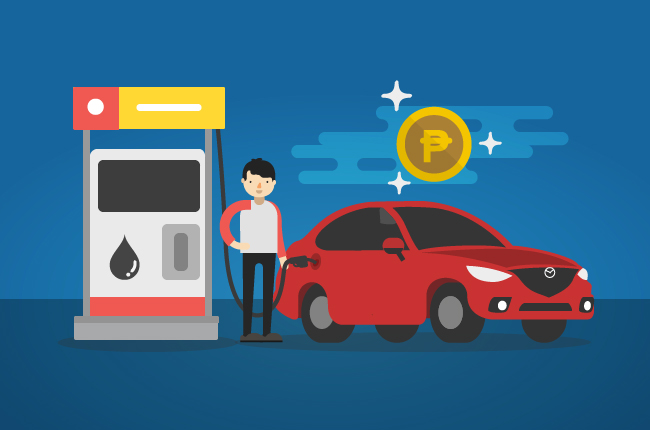
Modern day diesel engines are quieter, more durable, and cleaner than before. However, they use heavy parts and expensive exhaust after-treatment systems. In order to solve this problem, Mazda changed the way diesel engines work with its SKYACTIV-D technology.
Before we proceed, we need to explain what compression ratio is and how it affects the performance of an engine. Why? Because with the SKYACTIV-D technology, Mazda deliberately reduced the compression ratio – making their diesel engine unique from other carmakers.
Compression ratio explained
Automobile engines produce energy through the up and down motion of the pistons inside the cylinders, compressing the air-fuel mixture.
Compression ratio is the correlation between the volumes inside the cylinder when the piston is at its lowest point (bottom dead center), versus when it’s on its highest point (top dead center). In a nutshell, the higher the compression ratio is, the more mechanical energy you could get from the air-fuel mixture inside the cylinder. That has always been the principle when we’re talking about compression ratios.
However, Mazda dared to defy that with SKYACTIV-D technology.

Low compression ratio
Instead of keeping the compression ratio high in a diesel engine, as it has always been believed, Mazda reduced it to 14:1 – the world’s lowest among diesel engines. Their intention is to lower compression ratio to enable air and fuel to mix more thoroughly, resulting to cleaner exhaust emissions, higher combustion efficiency, and better fuel economy.
How? By lowering the compression ratio, Mazda was able to redesign their diesel engine by using lighter components. The aluminum block is lighter by 25 kg, while the cylinder head has thinner walls resulting to 25% less weight. Moreover, the crankshafts and pistons are also 25% lighter. All these result to better drivability and efficiency – as opposed to the current Common Rail Direct Injection (CRDi) diesel engines.
Engine efficiency
You might think that Mazda’s bold move will affect the fuel economy of their diesel engine. However, they did otherwise and boosted it by delaying the combustion process by half a millisecond to allow better mixture of air and fuel. This makes the engine more efficient as it produces more power and consumes less fuel.
Moreover, they also optimized fuel injection and combustion close to the top dead center of the cylinder which results to a higher expansion ratio, yielding more power and better performance.
It doesn’t stop there. They now use multi-hole Piezo fuel injectors that can customize the amount and timing of the fuel put into the cylinder. These high-end fuel injectors open and close quicker than the conventional solenoid type, making the process much more precise to adapt to different driving conditions. In addition to that, they used ceramic glow plugs to assure cold-start capability.
Lastly, to avoid knock at cold temperatures, Mazda used its patented variable valve lift (VVL) system on the exhaust side of the cylinder. This allows recirculation of hot exhaust gases back into the combustion chamber – increasing the air temperature for fast engine warm-up and stable ignition.

Clean power
Just like the other CRDi engines, the SKYACTIV-D engine uses turbochargers to boost performance by increasing its torque and power output. However, it uses two-stage turbochargers (small and large) that can be used interchangeably to fit certain driving conditions. During low speed drive, it will produce higher torque; it will then produce more power at high speeds.
This turbo system, along with the low compression design, allows optimally timed combustion with low soot and NOx emissions. They also reduced the fuel hotspots that end up as pollutants. With this, there won’t be any need for expensive exhaust after-treatment systems that are costly to maintain.
The introduction of the Mazda SKYACTIV-D technology is a game changer, not only to their local lineup, but for the whole automotive industry as well.
Bermaz Auto Philippines (BAP) Inc., the local importer and distributor of Mazda vehicles, once again brings this technology into their showrooms this year with the new diesel variants of the all-new CX-5 compact crossover and the Mazda 6 Sedan.
Latest Features
-
The 6 things every Ford Ranger must pass before it leaves the factory / Featured Article
Every Ford Ranger, from the base model to the Ranger Raptor, goes through a full inspection process before it leaves the factory. This includes six steps that make sure it’s ready to drive a...
-
Which GAC AION EV is best for your everyday lifestyle? / Featured Article
The GAC AION lineup has something for everyone, maybe you're after space, speed, or just a smooth city drive. Here's a quick breakdown of which model might work best for your day-to-day life...
-
The AutoDeal Awards 2024: Celebrating excellence in the auto Industry / Featured Article
The AutoDeal Awards 2024: Celebrating excellence in the auto Industry
Popular Articles
-
Cheapest cars under P700,000 in the Philippines
Jerome Tresvalles · Sep 02, 2024
-
First car or next car, the Ford EcoSport is a tough package to beat
Jun 18, 2021
-
Car Maintenance checklist and guide – here’s everything you need to know
Earl Lee · Jan 12, 2021
-
Most fuel efficient family cars in the Philippines
Bryan Aaron Rivera · Nov 27, 2020
-
2021 Geely Okavango — Everything you need to know
Joey Deriquito · Nov 19, 2020
-
Family cars in the Philippines with the biggest trunks
Sep 20, 2023
-
Head to head: Toyota Rush vs. Suzuki XL7
Joey Deriquito · Oct 28, 2020
-
Why oil changes are important for your car
Earl Lee · Nov 10, 2020
-
2021 Kia Stonic — What you need to know about it
Joey Deriquito · Oct 16, 2020
-
Top 7 tips for buying a used car in the Philippines
Joey Deriquito · Nov 26, 2020



